Expert Speak: What Are the Best Materials for Home Elevations?
Houzz checks in with an expert about the the most sturdy and adaptable materials for home facades
No matter how beautifully the interior is designed, the elevation remains the first point of expression of style and standard of any home. Not only should a facade speak of the overall design language of the home, it should be visually appealing, protective, durable and easy to care for.
The next time you plan to build a new home or redo the elevation of your existing one, take cues from the list of exterior materials mentioned here, reinforced with comments and tips from a practising professional.
Expert advice: Architect Milind Pai of Milind Pai Architects & Interior Designers
The next time you plan to build a new home or redo the elevation of your existing one, take cues from the list of exterior materials mentioned here, reinforced with comments and tips from a practising professional.
Expert advice: Architect Milind Pai of Milind Pai Architects & Interior Designers
2. Textured plaster
Stucco plaster, mud plaster and lime plaster are commonly used on exterior walls to attain a textured finish. Although plaster looks good in its original form as well, it can be coloured to the desired hue if the design demands. You can hire experienced labour to achieve different finishes from sanded to sprayed and from trowel finish to lace finish. You can also fake the look of stone, brick or wood plank with the help of moulds or stencils.
“In comparison to cladding and panelling materials such as stones, tiles and metal, a combination of textured plaster and paint, topped off with decorative panels, fins or jalis (made of fibreglass-reinforced plastic, engineered wood boards, composite cement boards, solid surface and so on), can tailor a more economic and hassle-free elevation for homes,” says architect Milind Pai.
Consult with an architect from the directory of Houzz professionals
Stucco plaster, mud plaster and lime plaster are commonly used on exterior walls to attain a textured finish. Although plaster looks good in its original form as well, it can be coloured to the desired hue if the design demands. You can hire experienced labour to achieve different finishes from sanded to sprayed and from trowel finish to lace finish. You can also fake the look of stone, brick or wood plank with the help of moulds or stencils.
“In comparison to cladding and panelling materials such as stones, tiles and metal, a combination of textured plaster and paint, topped off with decorative panels, fins or jalis (made of fibreglass-reinforced plastic, engineered wood boards, composite cement boards, solid surface and so on), can tailor a more economic and hassle-free elevation for homes,” says architect Milind Pai.
Consult with an architect from the directory of Houzz professionals
3. Concrete
Concrete, besides being a primary structural building material, is now a popular accenting exterior material in many Indian homes. This durable and versatile material offers a Brutalist yet handsome look, one that works well with other materials such as wood, paint and glass.
Concrete exteriors can be achieved in multiple ways. If exposing the existing concrete walls is not a feasible option for you, you can brush your plastered walls with waterproof cement paint. Composite panels – for example, fibre cement boards – can be clad over any treated or non-treated exterior surface, too. Similar to stucco and lime plaster, cement plaster can be applied to walls to tailor an exposed concrete look, as well.
Scroll through many other industrial home elevation designs
Concrete, besides being a primary structural building material, is now a popular accenting exterior material in many Indian homes. This durable and versatile material offers a Brutalist yet handsome look, one that works well with other materials such as wood, paint and glass.
Concrete exteriors can be achieved in multiple ways. If exposing the existing concrete walls is not a feasible option for you, you can brush your plastered walls with waterproof cement paint. Composite panels – for example, fibre cement boards – can be clad over any treated or non-treated exterior surface, too. Similar to stucco and lime plaster, cement plaster can be applied to walls to tailor an exposed concrete look, as well.
Scroll through many other industrial home elevation designs
To achieve a more customised texture or pattern, cement concrete can be poured in special moulds or forms during the construction, or compressed cement boards can be dry-clad (non-load-bearing panels installed over metal frames 30–40 millimetres away from the structural wall) after construction. In all cases, the concrete must be sealed for a waterproof setup.
“Selecting the right home elevation material involves consideration of the design language, budget of project, availability of products and context of the site. Other than that, maintenance and waterproofing are two key aspects that should be taken into account each time,” suggests Pai.
Browse through photos of exteriors on Houzz
“Selecting the right home elevation material involves consideration of the design language, budget of project, availability of products and context of the site. Other than that, maintenance and waterproofing are two key aspects that should be taken into account each time,” suggests Pai.
Browse through photos of exteriors on Houzz
4. Brick
Brick (made of either clay, fly ash or stabilised earth) is also a primary building material that can be left bare to exhibit a tactile, long-lasting and easy-to-care-for building envelope. This textural surface can duly complement industrial, traditional and contemporary styles.
This industrial-style material goes well with plain surfaces such as plastered and painted walls, exposed concrete, glass and the like. If your home does not allow exposing the structural bricks, you can go for faux brick tiles or panels that replicate the look of a natural brick wall.
Searching for inspiration? These 6 contemporary Indian homes with brick facades will give you serious goals
Brick (made of either clay, fly ash or stabilised earth) is also a primary building material that can be left bare to exhibit a tactile, long-lasting and easy-to-care-for building envelope. This textural surface can duly complement industrial, traditional and contemporary styles.
This industrial-style material goes well with plain surfaces such as plastered and painted walls, exposed concrete, glass and the like. If your home does not allow exposing the structural bricks, you can go for faux brick tiles or panels that replicate the look of a natural brick wall.
Searching for inspiration? These 6 contemporary Indian homes with brick facades will give you serious goals
5. Wood
Wood is a super-adaptable material that can bring tons of warmth and organic beauty to the exteriors. You can choose from the large number of hardwood, softwood and engineered wood options available with manufacturers. Wood planks and panels can be painted, stained or polished to get the intended look and feel.
Though there is nothing like natural wood displaying unprocessed grains, its faux alternatives (made of composite fibre, aluminium or cement) are comparatively more hard-wearing and low-maintenance.
“Recently, there has been a huge influx of manufacturing brands (Phomi, Fundermax and Shera, to name a few) that offer durable exterior solutions in newer textures and colours, with a unique use of material and finish. High-pressure laminates and wood-plastic composite boards are other options that can replicate natural wood grains,” Pai says
Here are some winning ways to integrate wood into a building’s exterior
Wood is a super-adaptable material that can bring tons of warmth and organic beauty to the exteriors. You can choose from the large number of hardwood, softwood and engineered wood options available with manufacturers. Wood planks and panels can be painted, stained or polished to get the intended look and feel.
Though there is nothing like natural wood displaying unprocessed grains, its faux alternatives (made of composite fibre, aluminium or cement) are comparatively more hard-wearing and low-maintenance.
“Recently, there has been a huge influx of manufacturing brands (Phomi, Fundermax and Shera, to name a few) that offer durable exterior solutions in newer textures and colours, with a unique use of material and finish. High-pressure laminates and wood-plastic composite boards are other options that can replicate natural wood grains,” Pai says
Here are some winning ways to integrate wood into a building’s exterior
6. Stone
Designers have used natural stones such as sandstone, travertine and granite on home exteriors both structurally and in drywall forms. It is not only an eco-friendly alternative to many engineered elevation solutions, but sealed stone makes for tough and imperishable exteriors as well.
Designers have used natural stones such as sandstone, travertine and granite on home exteriors both structurally and in drywall forms. It is not only an eco-friendly alternative to many engineered elevation solutions, but sealed stone makes for tough and imperishable exteriors as well.
The earthy touch of natural stone can be used on both modern and traditional home exteriors. Look how the mass of unpolished slate tiles stands out in the facade of this chic urban home.
Check out cladding options in Houzz products
Check out cladding options in Houzz products
For a sleeker look, you can opt for surface-treated, high-polish marble and granite slabs as well. Their satiny surfaces and organic grain can turn any plain elevation into something unique and eye-catching.
Similar to wood and brick facades, stone facades can be cloned with the use of tiles and sheets made of engineered composite materials.
“It is always recommended that one uses stones which are native to an area and easily available. Granite and marble slabs come in a variety of shades, are eco-friendly and highly durable,” says Pai. He adds, “Red sandstone from Dholpur and Agra, pink sandstone from Jodhpur, and other vernacular stones have been used traditionally on building facades since earlier times. They not only instill a timeless appeal, but also extend the life of the structure dramatically.”
Browse more Indian home exteriors here
Similar to wood and brick facades, stone facades can be cloned with the use of tiles and sheets made of engineered composite materials.
“It is always recommended that one uses stones which are native to an area and easily available. Granite and marble slabs come in a variety of shades, are eco-friendly and highly durable,” says Pai. He adds, “Red sandstone from Dholpur and Agra, pink sandstone from Jodhpur, and other vernacular stones have been used traditionally on building facades since earlier times. They not only instill a timeless appeal, but also extend the life of the structure dramatically.”
Browse more Indian home exteriors here
7. Metal
Metal is another versatile elevation material that is slowly gaining prominence in India. Designers are employing treated steel, Corten steel, zinc and aluminium on home facades to instil a sophisticated industrial vibe. Much the way natural wood weathers, metals such as Corten steel and zinc develop a beautiful patina over time.
Read more:
9 Cladding and Design Ideas for Facades
25 Exterior Designs: The New Face of Indian Homes
Tell us:
Do you know of other great exterior materials? Tell us about them in Comments below.
Metal is another versatile elevation material that is slowly gaining prominence in India. Designers are employing treated steel, Corten steel, zinc and aluminium on home facades to instil a sophisticated industrial vibe. Much the way natural wood weathers, metals such as Corten steel and zinc develop a beautiful patina over time.
Read more:
9 Cladding and Design Ideas for Facades
25 Exterior Designs: The New Face of Indian Homes
Tell us:
Do you know of other great exterior materials? Tell us about them in Comments below.


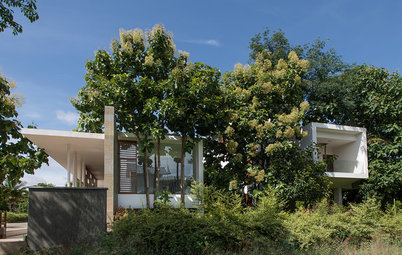

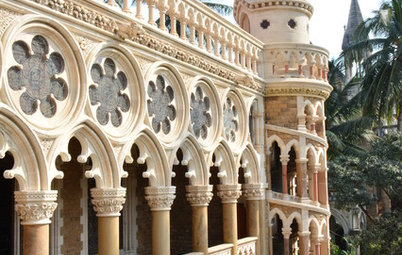
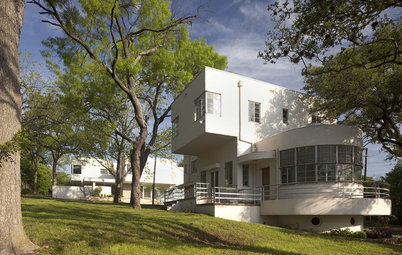

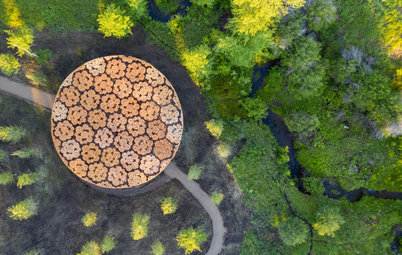
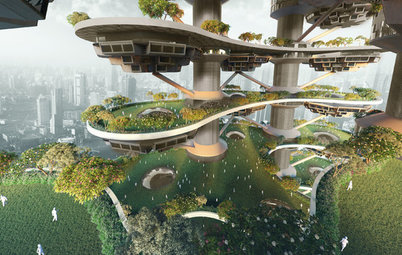
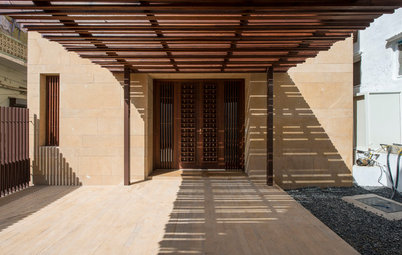
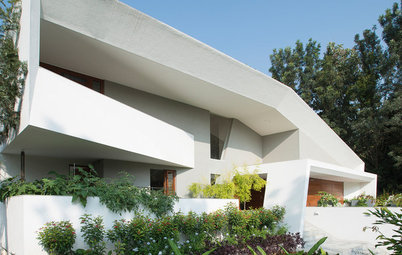
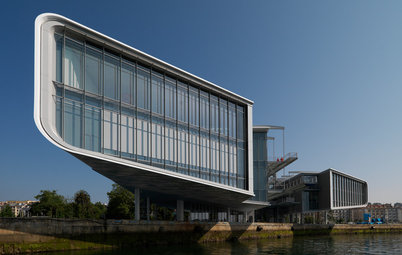
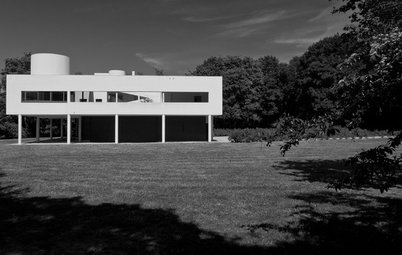
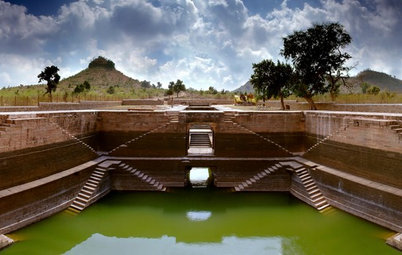
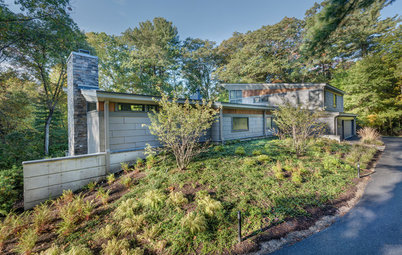
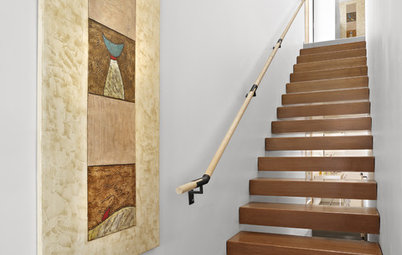
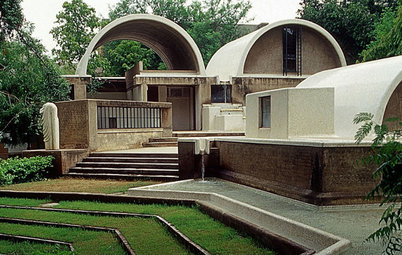
Acrylic emulsion paint is one of the most common, easy and budget-friendly ways of dressing up home exteriors. According to the design need, wall paints can be applied on plastered walls in matte or satin finishes. Opt for good-quality exterior-grade paint, readily available in the market in a myriad of colour options.
Check out these unusual exterior paint colour combinations for homes